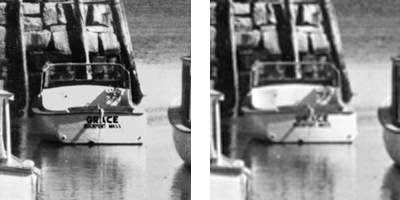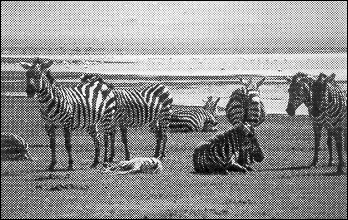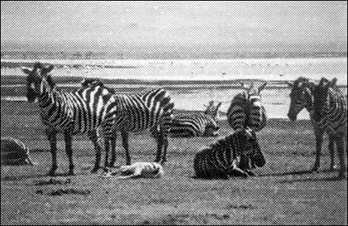
3. Conversion
Key
Concepts
introduction
scanning
factors
rich
digital master
benchmarking
text
stroke
continuous-tone
halftone
proposed
method guidelines

BENCHMARKING
RESOLUTION REQUIREMENTS FOR
CONTINUOUS TONE DOCUMENTS
Resolution requirements for photographs and other continuous tone documents
are difficult to determine because there is no obvious fixed metric for
measuring detail. Detail may be defined as relatively small-scale parts
of a document, but this assessment may be highly subjective. We might
agree that street signs visible under magnification in a cityscape should
be rendered clearly, but what about individual hairs or pores in a portrait?
At the granular level, photographic media are characterized by random
clusters of irregular size and shape, which can be practically meaningless
or difficult to distinguish from background noise. Many institutions have
avoided the issue of determining detail by basing their resolution requirements
on the quality that can be obtained from prints generated at a certain
size (e.g., 8 x 10-inch) from a certain film format (e.g., 35 mm, 4 x
5-inch). The important thing to remember about continuous tone documents
is that tone and color reproduction is as important, if not more so, than
resolution in determining image quality. See Guides
to Quality in Visual Resource Imaging.

Effect of Resolution on Continuous Tone Documents: The name of the boat (Grace) is legible in the left image, which was scanned at a higher resolution.
BENCHMARKING
RESOLUTION
REQUIREMENTS FOR
HALFTONES
Halftones are particularly difficult to capture digitally, as the screen
of the halftone and the grid of the digital image often conflict, resulting
in distorted images with moiré (e.g., wavy patterns). Although
a number of scanners have developed special halftoning capabilities, one
of the more consistent ways to scan is in grayscale at a resolution that
is four times the screen ruling of the halftone. This screen ruling can
be determined using a halftone screen finder, available from graphic
arts supply houses. For high-end materials, such as fine art reproductions, this
requirement will result in high resolutions (on the order of 700-800 dpi).
For most halftones, 400 dpi, 8-bit capture is probably sufficient. Cornell
did not discern any noticeable moiré when scanning a range of 19th-
and early 20th-century halftones at that resolution. Lower resolutions
can be used when special treatment scanning is employed. The Library
of Congress has identified four distinct approaches to imaging halftone
documents. See also the Cornell and Picture Elements study on imaging
book illustrations for discussion of halftone treatments.

Effect of Resolution on Halftone Documents: The top image was scanned at 150 dpi, a resolution that clashed with the halftone's screen ruling of 85 lpi. The bottom image was scanned at 400 dpi and scaled for comparison purposes. Click on bottom image to view halftone grid pattern.
© 2000-2003 Cornell University Library/Research Department
